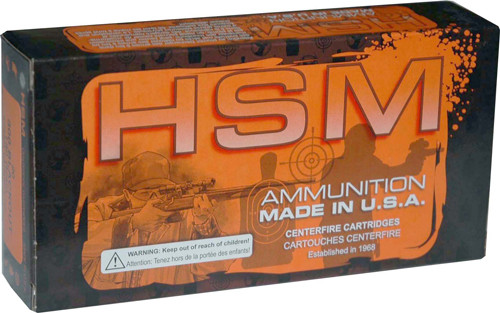.50 BMG Ammo
50 BMG: In Depth
The .50 Browning Machine Gun (BMG) caliber, also known as 12.7x99mm NATO, is one of the most powerful and versatile rounds in the world. Initially designed for military use, the .50 BMG has found its place in a variety of applications, from long-range shooting to anti-material roles. Its sheer power, accuracy, and range make it a popular choice among enthusiasts, professional marksmen, and military personnel. This article delves into the rich history, performance, applications, and available options for the .50 BMG caliber.
.50 BMG History and Development
The .50 BMG caliber was developed during the late stages of World War I by the legendary John Moses Browning. The need for a powerful round capable of penetrating armor and engaging aircraft led to its creation. Officially adopted by the U.S. military in 1921, the .50 BMG quickly became a staple for heavy machine guns, such as the M2 Browning, which has seen extensive use in numerous conflicts worldwide.
Over the decades, the .50 BMG has evolved, with advancements in bullet design and manufacturing techniques enhancing its performance. The round has been adapted for use in sniper rifles and anti-material rifles, significantly extending its application beyond machine guns. The .50 BMG's development reflects its enduring utility and adaptability in modern warfare and civilian use.
Performance
The .50 BMG is renowned for its exceptional ballistic performance. Here’s a breakdown of its key characteristics:
- Velocity: The muzzle velocity of a .50 BMG round can exceed 2,800 feet per second (fps), depending on the specific load and barrel length.
- Trajectory: The round maintains a relatively flat trajectory over long distances, making it highly accurate at ranges exceeding 1,500 meters.
- Recoil: Due to its immense power, the .50 BMG generates significant recoil, necessitating robust firearms with effective recoil management systems.
- Penetration: The round’s high velocity and large mass enable it to penetrate thick armor, concrete, and even light vehicles, underscoring its anti-material capabilities.
Applications
The .50 BMG caliber is utilized in a variety of roles, including:
- Military: Widely used in heavy machine guns, sniper rifles, and anti-material rifles for engaging armored targets, fortifications, and enemy personnel at long ranges.
- Hunting: While not common, the .50 BMG can be used for hunting large game, particularly in regions where long-range shots are necessary.
- Target Shooting: Long-range shooting competitions often feature the .50 BMG, with shooters taking advantage of its accuracy and extended range capabilities.
- Self-Defense: Though impractical for personal defense, the .50 BMG is sometimes used in vehicle-mounted or fortified positions for defensive purposes.
Available Firearms
Several firearms are chambered in .50 BMG, including:
- Barrett M82/M107: A semi-automatic sniper rifle known for its reliability and effectiveness in long-range engagements.
- McMillan TAC-50: A bolt-action sniper rifle favored by military and law enforcement snipers for its precision.
- Serbu BFG-50: A more affordable option, this single-shot rifle is popular among civilian shooters for its simplicity and accuracy.
- Armalite AR-50: Known for its rugged design and accuracy, this bolt-action rifle is a favorite in long-range shooting competitions.
Available Ammunition
A variety of ammunition types are available for the .50 BMG caliber, each designed for specific purposes:
- FMJ (Full Metal Jacket): Standard military round, offering deep penetration and consistent performance.
- API (Armor-Piercing Incendiary): Designed to penetrate armor and ignite upon impact, used for targeting vehicles and fortified positions.
- Tracer: Contains a pyrotechnic charge that illuminates the bullet’s trajectory, aiding in target acquisition and adjustment.
- Match Grade: Precision-manufactured rounds for competitive shooting, offering enhanced accuracy and consistency.
- Raufoss Mk 211: A multipurpose round combining armor-piercing, explosive, and incendiary effects, used by military forces.
Brands like Hornady, Federal, and Winchester produce a range of .50 BMG ammunition, ensuring availability for various applications and preferences.
Comparisons
Comparing the .50 BMG to other calibers highlights its unique attributes:
- .338 Lapua Magnum: While the .338 Lapua offers excellent long-range accuracy, it lacks the raw power and penetration capabilities of the .50 BMG.
- .416 Barrett: A high-velocity round with better ballistics than the .50 BMG, but it doesn't match the .50's versatility in anti-material roles.
- 7.62x51mm NATO: The .50 BMG far surpasses the 7.62 NATO in range, power, and penetration, though the latter is more practical for standard infantry use.
.50 Browning Machine Gun FAQs:
The effective range varies by firearm and shooter skill, but it can reach out to 1,800 meters for precision shooting.
Yes, in many countries, including the United States, with appropriate licensing and regulations.
50 BMG prices vary, but .50 BMG rounds can range from $3 to $10 or more per round, depending on the type and manufacturer.






